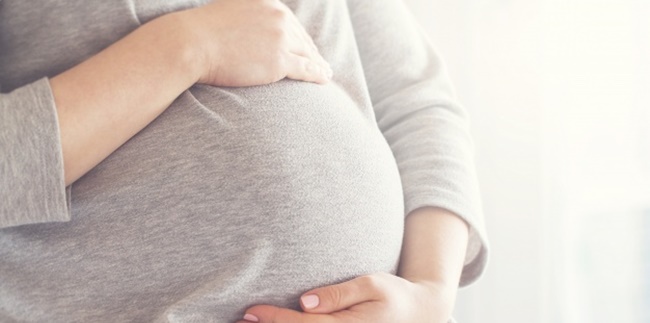91 Entertaining and Heartwarming Gombal Guesses for Couples
These are entertaining and can make your partner baper with gombal guesses. Let's check it out, KLovers.

Kapanlagi.com - Blighted ovum is a pregnancy disorder characterized by abnormal trophoblast growth that should develop into the placenta. The cause of blighted ovum can occur due to various triggering factors, one of which is related to imperfect fertilization between egg and sperm.
Blighted ovum sounds quite familiar, also known as molar pregnancy. This happens because of abnormal cell growth that forms like a cyst filled with fluid. The cyst filled with fluid appears like a cluster of grapes.
Before being detected as having blighted ovum, initially the symptoms are almost similar to a normal pregnancy. This happens because blighted ovum is usually difficult to detect if not examined by an obstetrician.
If the doctor finds abnormalities in pregnancy through ultrasound and blood tests, such as the absence of a fetus in the uterus, abnormal placenta resembling a cluster of grapes, impaired fetal growth, or a small amount of amniotic fluid, these can be early signs of blighted ovum. Several causes of blighted ovum can occur with certain risk factors that need to be known as early as possible.
So what are the causes of blighted ovum?
The causes of blighted ovum are explained below. For a more complete explanation, here are the causes of blighted ovum along with the risk factors and symptoms as reported by kapanlagi.com from various sources.

(credit: freepik.com)
As previously mentioned, molar pregnancy is a pregnancy disorder that occurs in the early stages of conception. In a normal conception, the fertilized egg will develop and form an embryo. The embryo will then continue to divide and implant in the uterus. However, in the case of molar pregnancy, this condition occurs due to abnormal or abnormal growth of the fertilized egg.
According to mayoclinic.org, the causes of molar pregnancy can be due to an imbalance of genetic material or chromosomes during pregnancy. Molar pregnancy is divided into two types: complete molar pregnancy and partial molar pregnancy. Both types experience pregnancy abnormalities in the fertilization process.
Complete causes of molar pregnancy or complete hydatidiform mole occur when an empty egg cell is fertilized by one or two sperm. This causes all genetic material to come from the father. This condition causes the mother's egg cell chromosomes to be lost or even inactive and the father's chromosomes to be duplicated.
This is what causes molar pregnancy to occur due to abnormalities in the fertilization process. As a result, the fertilized egg cell cannot develop into a fetus as in a normal pregnancy. However, it continues to grow and form a cyst filled with fluid.

(credit: freepik.com)
Similar to complete molar pregnancy, the occurrence of partial molar pregnancy is also caused by abnormalities in the fertilization process. However, partial molar pregnancy occurs when two sperm fertilize an egg cell, resulting in an additional copy of the father's genetic material. In other words, the mother's chromosomes remain present, but the father's chromosomes have two sets. As a result, instead of having 46 chromosomes, there are 69 chromosomes, as reported by mayoclinic.org.

(credit: freepik.com)
After understanding the causes of molar pregnancy based on its type, it is also important to know the risk factors for molar pregnancy. One of them can be caused by age factor. Age factor is closely related to the occurrence of molar pregnancy, especially in women who are at risk of experiencing molar pregnancy at a later age or over 35 years old. The same goes for young teenagers, who are usually at a higher risk of experiencing molar pregnancy at an age below 17 years old. At that age, they often have a higher risk of experiencing molar pregnancy.
In addition to age factor, the risk of molar pregnancy tends to be higher in women who have a history of molar pregnancy. According to mayoclinic.org, if a woman has experienced molar pregnancy once, she is likely to have a similar occurrence in the future with an average probability of about 1 in 100 for each woman.
Meanwhile, according to cancerresearchuk.org, if a woman has experienced molar pregnancy twice, the risk level becomes even higher. They are at a higher risk of experiencing molar pregnancy again with a level of about 15 to 20 out of 100 or 15 percent to 20 percent.

(credit: freepik.com)
The risk factors for molar pregnancy are higher in women who have had a previous miscarriage. As it is known, miscarriage can occur due to several triggering factors, from medical conditions to specific problems. In relation to molar pregnancy, this condition often causes abnormal pregnancy. On the other hand, women who have had a previous miscarriage are at risk of experiencing molar pregnancy compared to those who have not.

(credit: freepik.com)
There are several symptoms of molar pregnancy that need to be recognized as early as possible to detect abnormalities during pregnancy. Initially, these normal pregnancy symptoms are almost similar to a normal pregnancy. However, they have differences that need to be known by pregnant women. The following are important symptoms of molar pregnancy, as reported by mayoclinic.org:
- Experiencing dark brown to bright red bleeding during the first trimester.
- Severe nausea and vomiting.
- Experiencing pelvic pain.
- The presence of grape-like cysts that come out through the vagina.
- Abnormally rapid enlargement of the abdomen during pregnancy.
- Experiencing anemia.
- High blood pressure.
- Overactive thyroid.
- The presence of ovarian cysts after examination.
Those are the causes, risk factors, and symptoms of molar pregnancy that need to be detected as early as possible. Consultation and regular check-ups with an obstetrician should be done if experiencing symptoms similar to molar pregnancy. Because usually, doctors will know if there are abnormalities in pregnancy through ultrasound and blood tests. So early detection can be done to prevent other risks.
(kpl/nlw)
Cobain For You Page (FYP) Yang kamu suka ada di sini,
lihat isinya
These are entertaining and can make your partner baper with gombal guesses. Let's check it out, KLovers.
This is 46 wise words from Boy Candra about love and life that will make you emotional. Let's check it out, KLovers.
Psychology is one of the branches of science that is quite popular nowadays. The science of psychology is often seen as the study of human beings and their behavioral patterns. Read more detailed explanation.
Women usually experience sagging breasts as they age, which triggers changes in breast shape. These are the rarely realized causes of sagging breasts for women.
Itchy ears on the inside certainly cause discomfort and an urge to scratch. However, scratching or digging your ears is not recommended. The causes of itchy ears and how to handle them are as follows.
To have a deeper understanding, a proposal is an important document in activities, read the following explanation.
Understanding the meaning of Masya Allah is a necessity for Muslims, so that they can use the expression properly
Someone with split ends hair problem usually also experiences dry hair condition. This is one of the main signs of split ends hair that requires maximum treatment. These are the causes of split ends hair.
Curriculum Vitae is very important and decisive when applying for a job. Therefore, it is important to understand what a CV is.
Here are 75 sweet pick-up lines that successfully make your crush blush. What are some of those sweet pick-up lines? Let's check them out, KLovers.
Parents often face several problems, especially when children have difficulty eating. The causes of children's difficulty in eating can occur due to various specific reasons that parents need to know.
These are 44 struggle-filled Paskibra words. Make it more solid, even emotional. What are these Paskibra words like? Let's check them out KLovers.